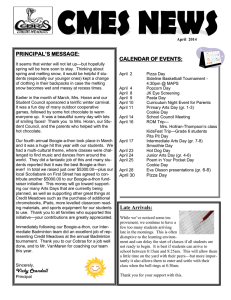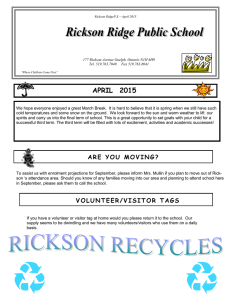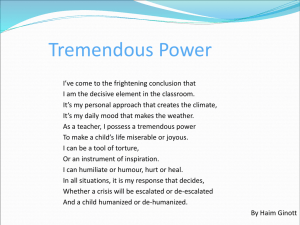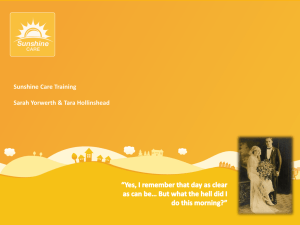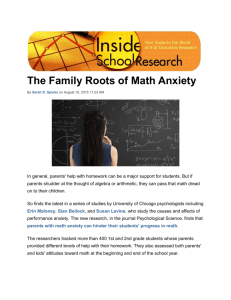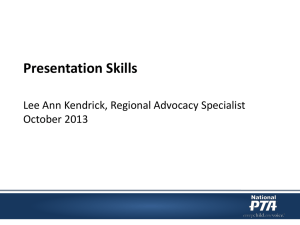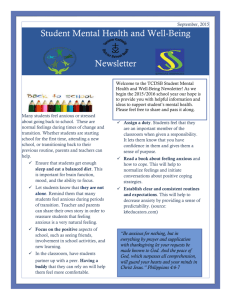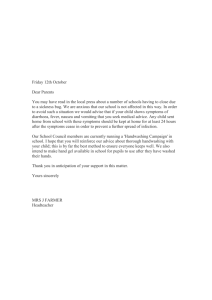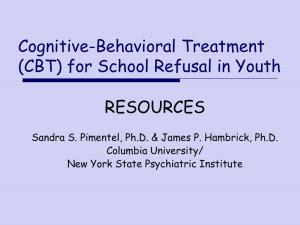Anxiety - Milwaukee Public Schools
advertisement
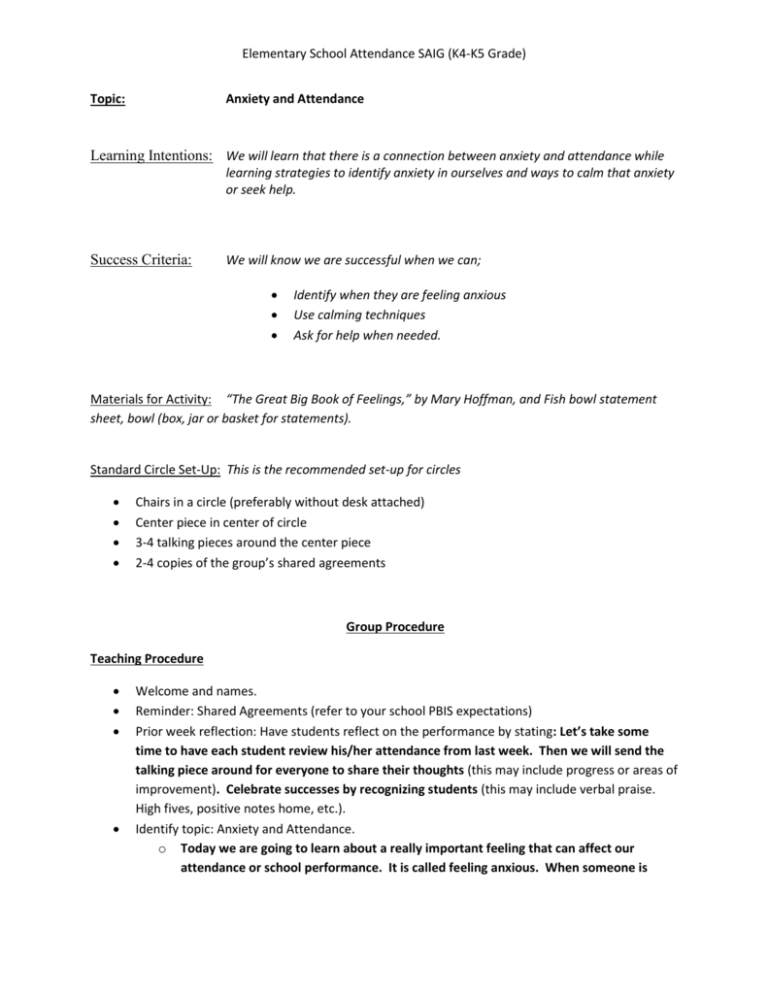
Elementary School Attendance SAIG (K4-K5 Grade) Topic: Anxiety and Attendance Learning Intentions: We will learn that there is a connection between anxiety and attendance while learning strategies to identify anxiety in ourselves and ways to calm that anxiety or seek help. Success Criteria: We will know we are successful when we can; Identify when they are feeling anxious Use calming techniques Ask for help when needed. Materials for Activity: “The Great Big Book of Feelings,” by Mary Hoffman, and Fish bowl statement sheet, bowl (box, jar or basket for statements). Standard Circle Set-Up: This is the recommended set-up for circles Chairs in a circle (preferably without desk attached) Center piece in center of circle 3-4 talking pieces around the center piece 2-4 copies of the group’s shared agreements Group Procedure Teaching Procedure Welcome and names. Reminder: Shared Agreements (refer to your school PBIS expectations) Prior week reflection: Have students reflect on the performance by stating: Let’s take some time to have each student review his/her attendance from last week. Then we will send the talking piece around for everyone to share their thoughts (this may include progress or areas of improvement). Celebrate successes by recognizing students (this may include verbal praise. High fives, positive notes home, etc.). Identify topic: Anxiety and Attendance. o Today we are going to learn about a really important feeling that can affect our attendance or school performance. It is called feeling anxious. When someone is Elementary School Attendance SAIG (K4-K5 Grade) anxious they feel nervous, uncertain and may have a fear that is related to an upcoming event or situation. Opening circle question/prompt: o What are some things that happen during the school day that might make someone feel anxious (afraid/nervous)? Explain the need for skill (connect with PBIS when appropriate): o By being able to identify when you are feeling anxious, using calming down skills and asking for help when you can’t calm down on your own, you are practicing the PBIS skills of being responsible. Teach Learning Intentions: o When students are feeling anxious they may feel: worried, tired, fearful, irritable, tense muscles, wet palms, sweat, stomach ache, head ache or poor concentration. o Feeling anxious may affect some student’s attendance. Some student’s may miss school, come in tardy regularly or miss a particular class because of these feelings. Can someone tell me why a student might be afraid (anxious) to come to school? (test, bullying, large class, presentation etc.). o When feeling anxious you need to identify a calming down technique that works for you. You can use the 3 and 10 rule (three deep breathes and then count to ten. Repeat as needed.) Have students demonstrate 3 and 10 rule. When you feel your body becoming anxious take a few seconds to turn on your “quick calming response” by saying to yourself; “my mouth will smile, my eyes will sparkle, my mind will be alert and my body will be calm.” Then take a slow deep breath and then let your breath out allowing your body to relax as you exhale. Allow a wave of warmth to flow from your head to your toes. Then return to your regular activity. Have students demonstrate the quick calming response. Thinking of a place that makes you feel happy and safe (your room, grandma’s house, Wisconsin Dells, Chucky Cheese) can also help you calm down and feel better. Have students identify their happy place. o If you still feel anxious after using your calming down techniques there are several people in the school building who can help, such as your teacher, the Social Worker, Psychologist or the Guidance Counselor. You should raise your hand and ask your teacher for a pass to see one of the staff members above or write the teacher a note if you do not feel comfortable asking out loud. A. Model examples and non-examples of the skill: a. Tammy is asked to take the attendance folder to the office. Tammy is happy her teacher asked her but is a little afraid of all the big people who are in the Elementary School Attendance SAIG (K4-K5 Grade) office. She notices her tummy has butterflies and she begins to sweat a little. Tammy thinks to herself I need to calm down. She begins using the 3 and 10 rules and repeats it twice. She notices that she is starting to calm down. Ask the students: Did Tammy feel anxious? If so why did she feel anxious? How did you know she was feeling that way? b. Little Bobby has a dentist appointment scheduled for after school. This will be Bobby’s first time at the dentist. His friends have told him scary things about the dentist and now he doesn’t want to go. Bobby decides he will miss his bus so that he won’t have to go to the dentist. Ask the students: Did Bobby feel anxious? What was he afraid of? Did Bobby handle his anxiety by using his calming down techniques or getting help? B. Provide Students with examples and non-examples of feeling anxious a. Yesterday Olaf’s teacher yelled at him for misbehaving. Olaf doesn’t want to go into his class this morning because he is nervous about seeing his teacher. Olaf’s tummy hurts, and he begins to cry outside of his class. What could Olaf do to calm down? What calming down technique would you use? b. Doc McStuffins forgot her permission slip for the field trip. Doc McStuffins will have to miss the trip and stay in another classroom. Doc McStuffin’s hands start to sweat and her heart beats a little faster as her prepares to go into the other class. What could Doc McStuffins do to calm down? What calming down technique would you use? Activity Before meeting with your group, go to the end of the lesson and cut out the fish bowl scenarios. Place them in a bowl or small box. Allow each student to pick one example and read it out loud. Then the group can decide if they would feel anxious or not. What would you do to calm yourself down? Closing Circle Question: If you ever felt anxious at school who could you talk too?
